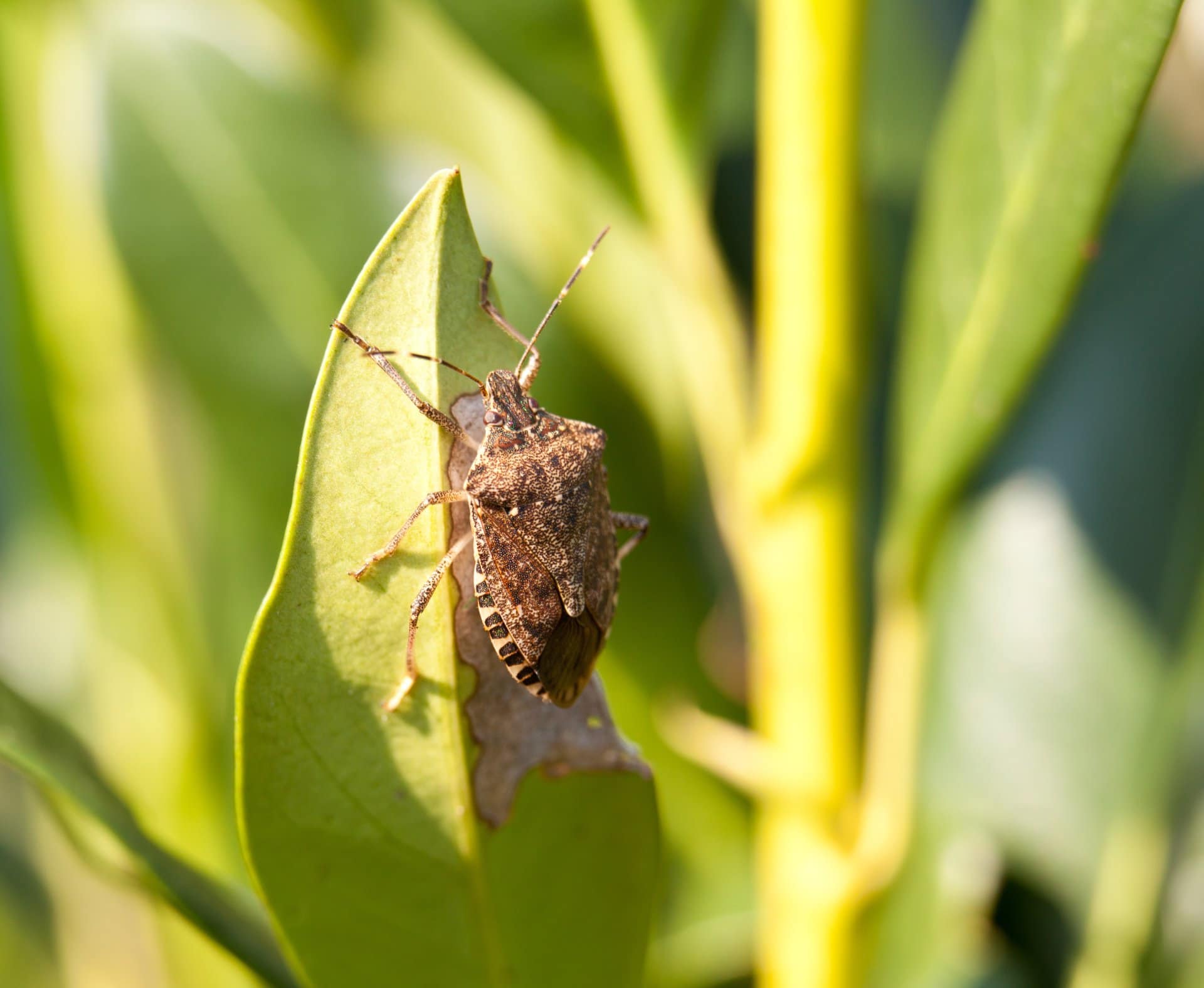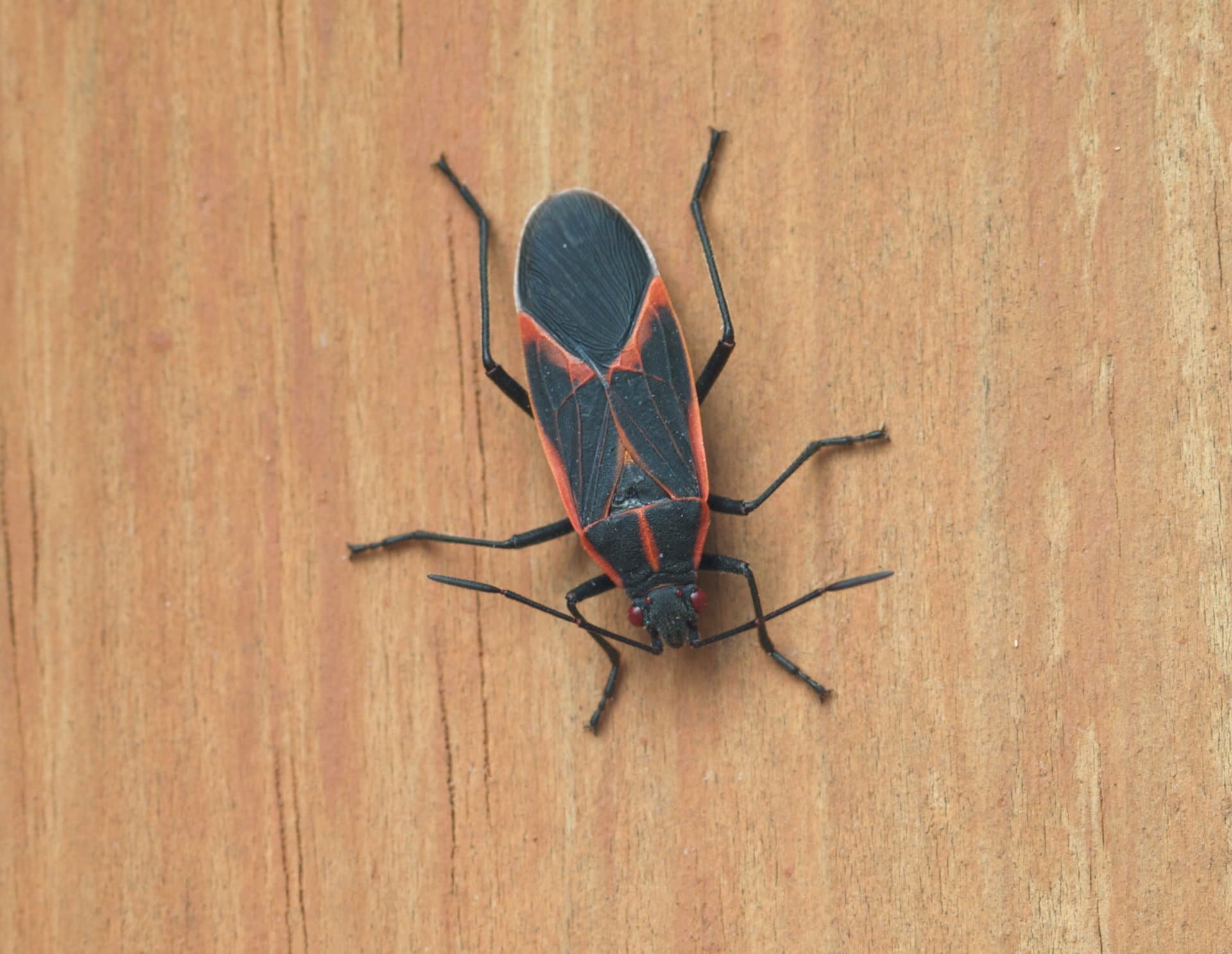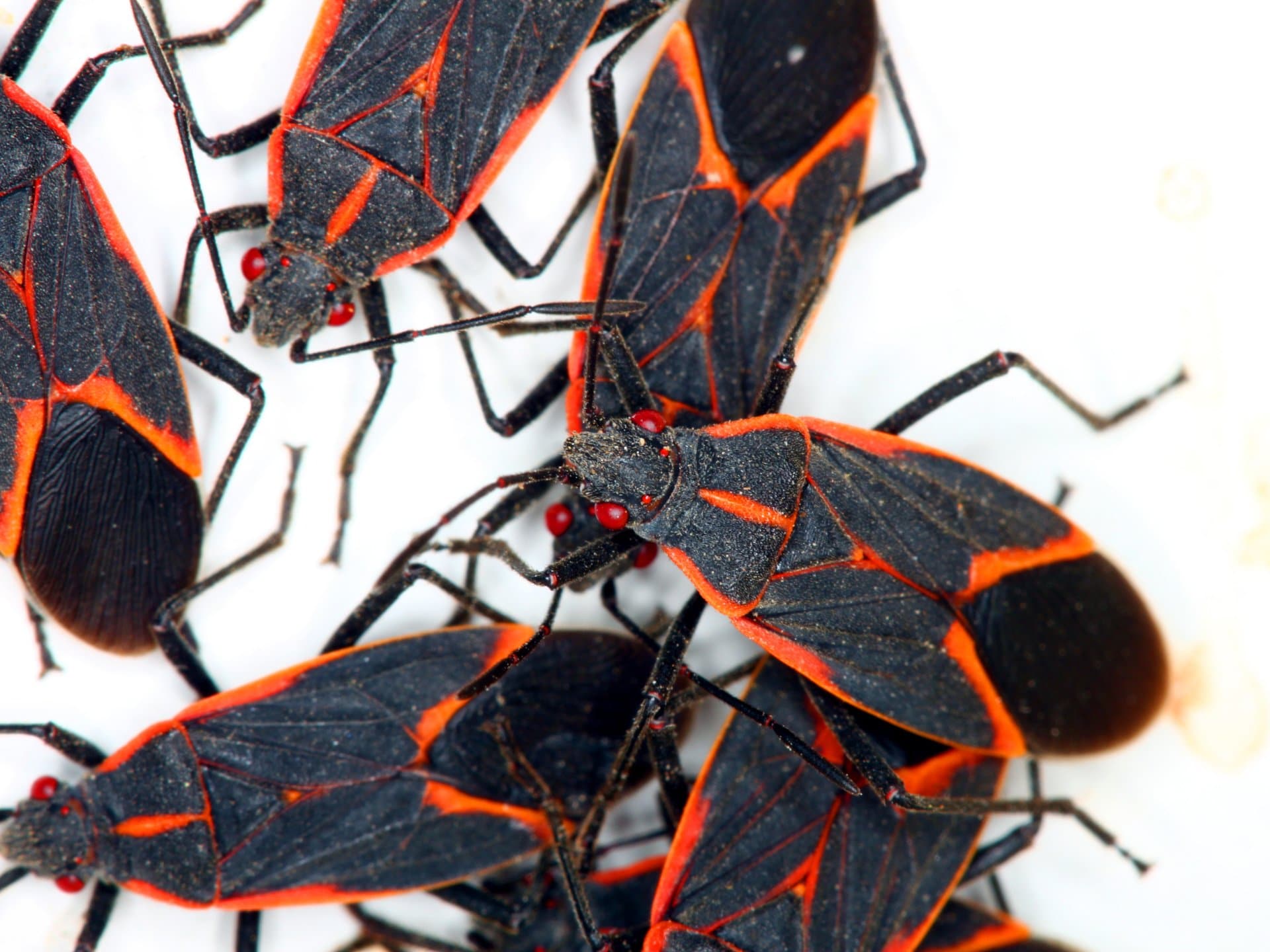Dropping temperatures and less daylight in winter keep humans indoors where it’s nice, warm and cozy. Do you know what else likes to hunker down inside for the winter? Insects. In particular, stink and boxelder bugs will seek shelter and forage for food. Your home looks like the best place to find both, so they move in.
If you’re concerned you may have boxelder bugs or a stink bug infestation in your home, check out the information below for what you can do about it. For additional help, contact Environmental Pest Management for questions and tips, and to bug-proof your home for the next round.
Boxelder Bugs and Stink Bugs
Boxelder bugs are known as the “scentless plant bugs.” They have flattened oval-shaped bodies, flat backs, and they can be either brown or black. With six legs, antennae, and red colored stripes on their heads and wings, these insects are rather small, at approximately ½ inch long.
They tend to feed, develop, and lay their eggs on boxelder trees, which is where they get their name, but they can also be found around maple trees. In the wintertime, they need a place to hibernate and prepare for their busy springtime, which is why they find your home so attractive.
Stink bugs are slightly longer than boxelder bugs. They are wider-bodied, and their back is commonly described as resembling a shield. They come in a variety of brown shades with off-white, gray, black, blueish, and bronze markings. Their infamous stink glands are on the underside of their midsection between their first and second pair of legs. Don’t smash these guys on sight! That’s how their pungent odor gets released.
A stink bug infestation can become a very severe issue. Recently, over 26,000 stink bugs were found overwintering in a home, and many states have reported that their stink bug populations are increasing. Female stink bugs lay up to 400 eggs in their lifetime, and they take only 35 to 45 days to mature, with their lifetime spanning from several months to a full year. As you can see, you can go from zero to 400 stink bugs in your house within a single winter!

How They Enter Your Home
These bugs most often migrate to your home seeking warmth, shelter, and food during the fall, and then settle into winter. During these seasons, they can be commonly be found in your house, garage or shed. They navigate their way inside through your siding, attic soffits, weep vents, nooks and crannies in your walls, under doors, and in your foundation. Homes that have overgrown bushes or trees with nearby overhanging branches are at a higher risk for boxelder and stink bug infestations. These branches create a bridge between their summer home and your winter accommodations.
Also Read: 8 Steps to Bug Proof Your Home for Fall and Winter
Neither boxelder bugs nor stink bugs bite or are particularly harmful to humans. However, they can be detrimental to your houseplants, and their excreta might damage upholstery such as drapes, carpeting, and cushions. Stink bugs not only release an offensive odor when they are squashed, but they also do so when they are threatened.
Boxelder or stink bug infestations are mainly great nuisances that can be avoided with care and the right steps.

Prevention and Removal Methods
The most successful prevention method against boxelder and stink bugs is to have your home insect-proofed before fall and winter. If you didn’t take care of this, don’t stress. Here is what you can do if you are suffering from a boxelder or stink bug infestation.
- Vacuum any visible bugs
- Place light traps with glue boards near entry points, such as the attic
- Dust attic soffits with a non-toxic insecticide, such as CimeXa
- Install screens in windows, or repair and replace them as necessary
- Install weatherstripping and door sweeps, or check current ones to be sure they are in good condition
- Seal any breaches in your foundation
- Remove, seal, or replace cover plates on electrical outlets, switch boxes, heating ducts and return air vents
- Remove light fixtures to their base plate; seal edges and replace
- Trim overgrown bushes, shrubbery, and overhanging trees
- Remove any boxelder trees from your property
If you have only a couple of these bugs floating around your home, you may hardly even notice them. However, when there is one, there could be many, and their populations can quickly escalate. Due to the particularly awful odor stink bugs release, the minor damage they can do to your plants and upholstery, and the general nuisance they are, you do not want these critters inside your walls.
Also Read: Secret Bug Breeding Grounds in Your Home This Winter
Take care not to kill boxelder and stink bugs and leave their bodies inside your walls or attic. Doing so creates the risk of attracting dermestid beetles, who will feed on the bug carcasses. This will only add to the ongoing bug infestation! Instead, use a vacuum to remove the bugs, and then empty the container or dispose of the vacuum bag immediately.

Let Us Help
Environmental Pest Management has been serving east-central Minnesota, including the Twin Cities’ greater ten-county metro area and surrounding suburbs for more than thirty years. We are experts in our field, and we are dedicated to eliminating your pest problems so you and your family can enjoy the best quality of life.
We will help you with our Integrated Pest Management procedure. This step-by-step system of evaluating, determining, and resolving a pest problem works by creating the most logical, safe, and long-term solution for your home. In this procedure, we use a variety of preventative methods to minimize the use of unnecessary pesticides and chemicals in or around your home.
Don’t wait for your bug problem to get out of hand. Check our site more information us and our methods, and contact us today to start finding the right solution for you.

